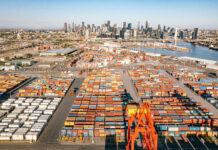
Braemar’s Timecharter index is still at a level closer to the 52 high than the annual low, but that is more likely to be a lag in the system than any real hope that the market is picking up in the short term.
In fact brokers’ reports this week are continuing the pessimistic theme outlined in last week’s report with George Lazaridis researcher at Allied Shipping in Athens arguing that there is a multi-layered freight system as a result of the COVID-19 virus.

“Prior to the beginning of this year, the discussion revolved around the potential of a two-tier market unfolding, depending on what type of fuel each vessel would burn. As it turns out and from all that has transpired, we may be experiencing a multi-tier freight market, writes Lazaridis.
According to Allied the Pacific market has seen a sharp earnings decline whereas earnings on the Atlantic look more promising, even though the returns are not particularly high.
Lazaridis went on to say that “For scrubber-fitted units, freight rates are following a completely different orbit than what is presented by the quoted Baltic freight indices. The asymmetrical freight market is one of the many bizarre things happening right now. With a certain time-lag, asset prices are likely to follow this steep downward correction,” but he adds this “has not fully materialised yet”.
Jonathan Roach at Braemar argues that owners are on the fence in a watching brief before they make any move into the charter or sale and purchase market.
Roach reports that MPC have sold the feeder vessel the gearless 987TEU AS Lauretta, built 2008 at Daesun Shipbuilding and the 1,049TEU AS Leona, also gearless and built 2008 in Daesun Shipbuilding on private terms.
“Although the demo numbers continue to soften, in part due to larger dry bulk vessels heading to the Indian subcontinent. We are seeing feeders trickle onto the market as employment opportunities are currently few and far between. Although one can say this has been caused by the earlier lunar new year coupled with the arrival of the coronavirus, we do expect the charter market to pick up again in the next few months,” writes Roach.
Even so there is a little light on the horizon with some Chinese factories returning to some limited production. Apart from those facilities offering medical supplies few factories are back up to speed, said Roach.
Braemar also pointed to the latest economic indicators from key economies in Japan, Germany and the US all showing downward trends as a cause for concern.
Lazaridis’ view is more strident, however, “With the market in disarray, where uncertainty is the prevailing sentiment, the mispricing of different asset classes is the obvious outcome. The bargain attitude, as well as, the short-term unpredictable outlook has created an excessive ‘bid-ask spread’, indicating a market in distress, unable to properly price both the future risks and trends involved.”






